On a Friday morning, I’m headed north on Guam’s Highway 3 from Dededo towards Tarague Beach. Verdant forest lines both sides of the four-lane road, but soon I notice coils of barbed wire that seem to puncture the surrounding leaves.
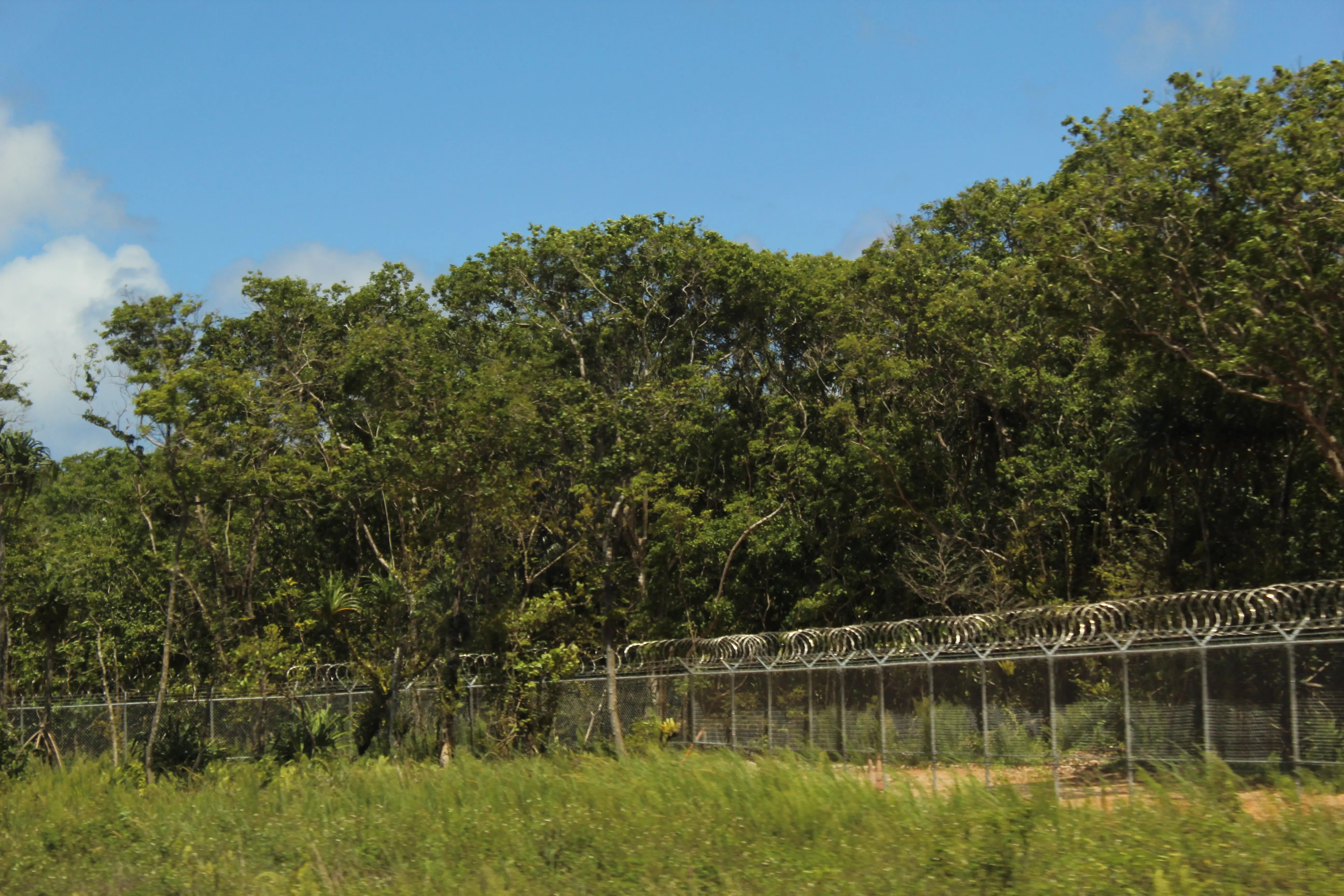
A few minutes later, my breath catches in my chest. Metal cranes have taken root in place of trees, cinnamon-colored dirt dominates the land’s color palette, and concrete structures suppress the ground below. The flattened site is called Camp Blaz—a new Marine Corps base that will bring an estimated 5,000 troops to the island.
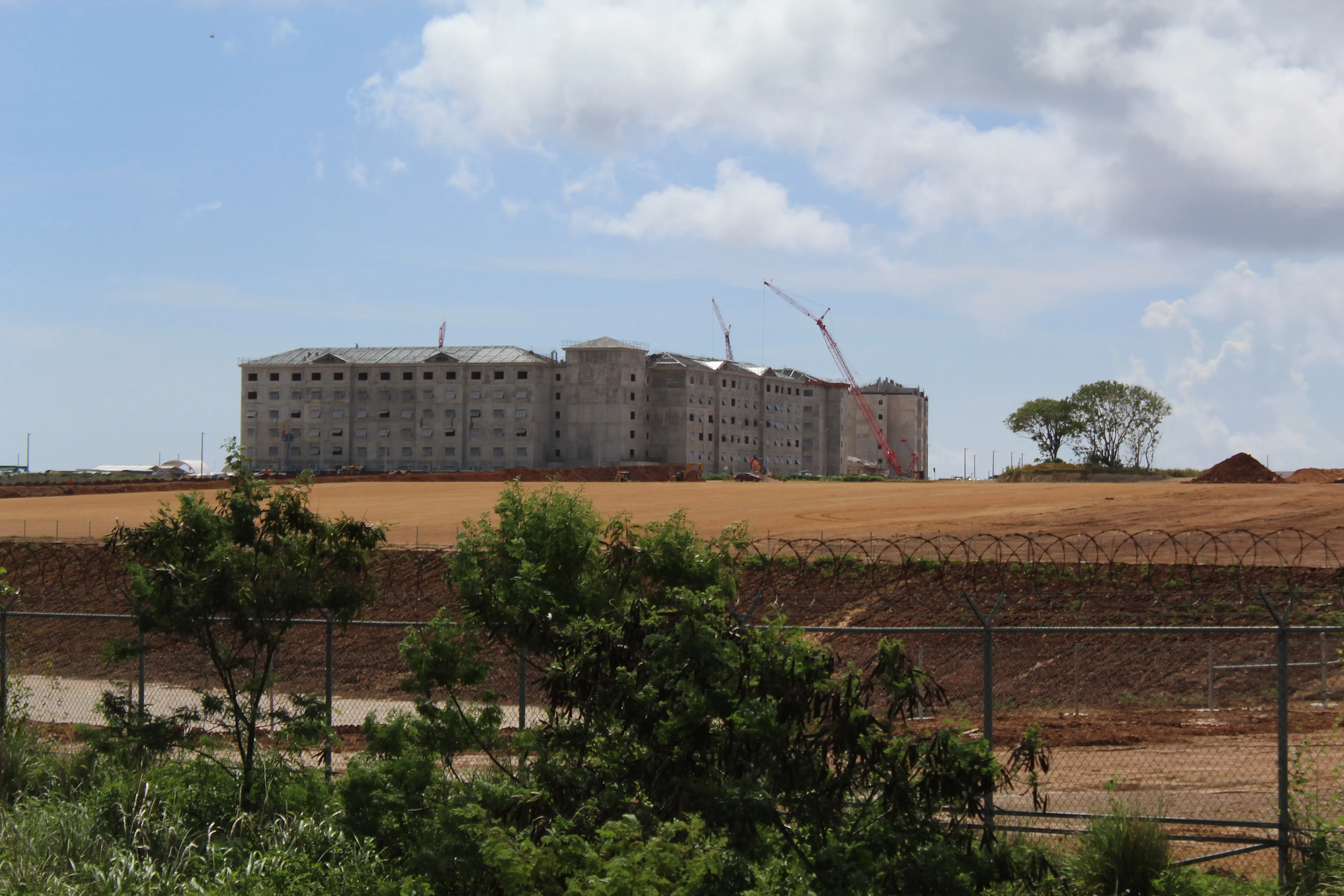
One military installation leads to another as the car turns into Andersen Air Force Base. With me is Monaeka Flores—a queer CHamoru activist and artist, and one of the leaders of the direct action group Prutehi Litekyan. Monaeka is taking me to their family’s ranch, which goes back at least four generations. “It was my Great Grandfather and Grandfather who ranched there,” Monaeka tells me.
Accessing one’s property should be straightforward. Whenever I visit home, I don’t think twice about simply knocking on my family’s front door. But Monaeka’s ancestral land is sandwiched between property occupied by the U.S. Fish and Wildlife Service and the Department of Defense. For Monaeka to access their ancestors’ land, they must pass through the gates of Andersen Air Force Base. Only private property owners and military personnel can enter the area. Since I fulfill neither of those requirements, Monaeka must sponsor me to accompany them.
We stand outside the Visitor Center for over an hour in the midday sun. The hot, humid air weighs heavily on our skin as we rotate standing under the shade for some reprieve. Once inside, uniformed personnel take my passport, social security number, picture, and thumbprints. I’m handed an approximately 5”x8” piece of paper, which is my ticket onto the base. Monaeka explains they go through a similar process every year to simply renew access to their family’s land. “It’s dehumanizing and frustrating,” they say. We present our passes to a uniformed guard and drive down a paved 2-lane road towards Tarague Beach. A drop in the cliffside and parting of the trees reveals a breathtaking view of the Pacific.
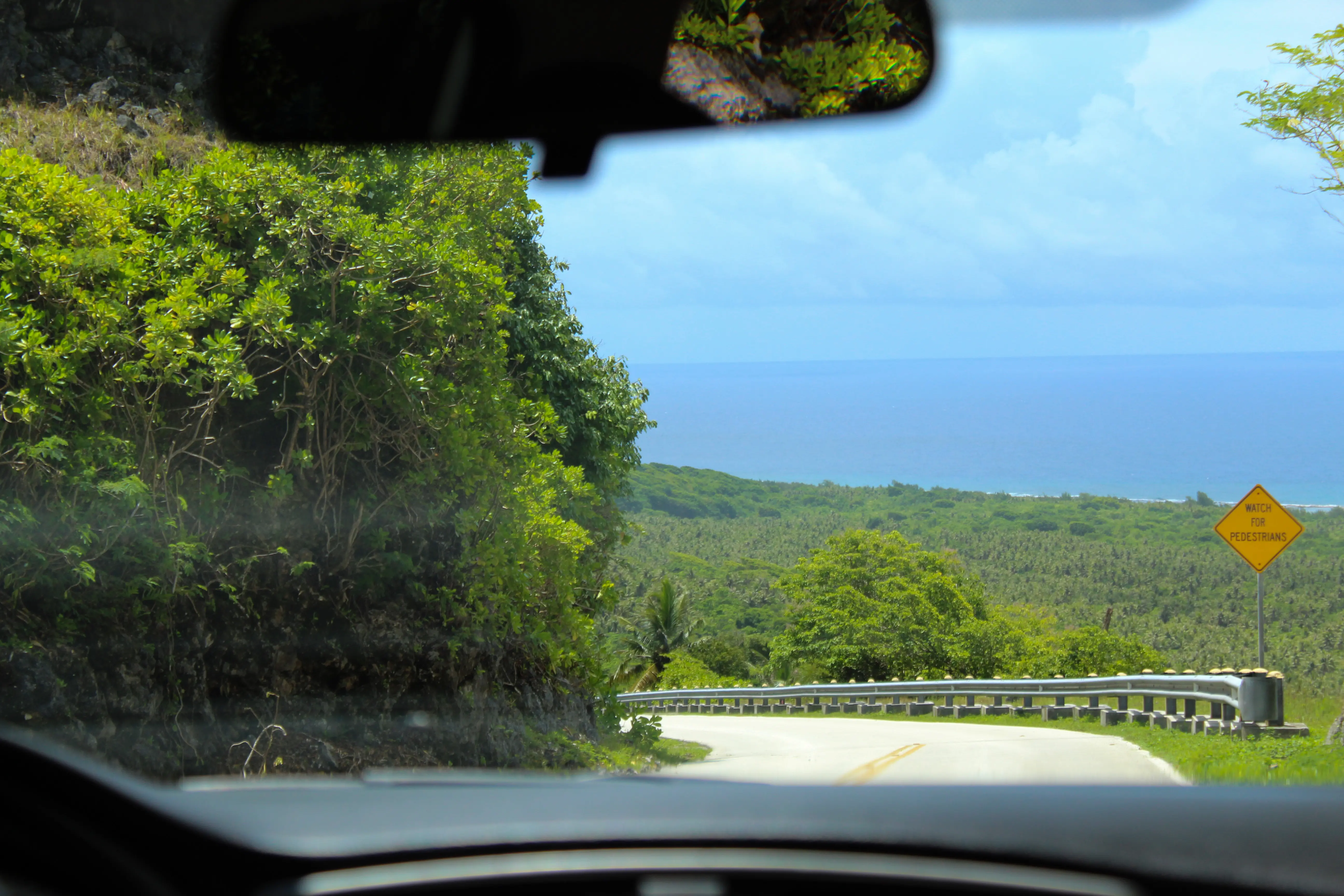
As we continue driving, metal fencing once again barricades access to forested land. The sight snaps me back to a disheartening reality. We are only “visitors” on this military base, and are forbidden from wandering too far.
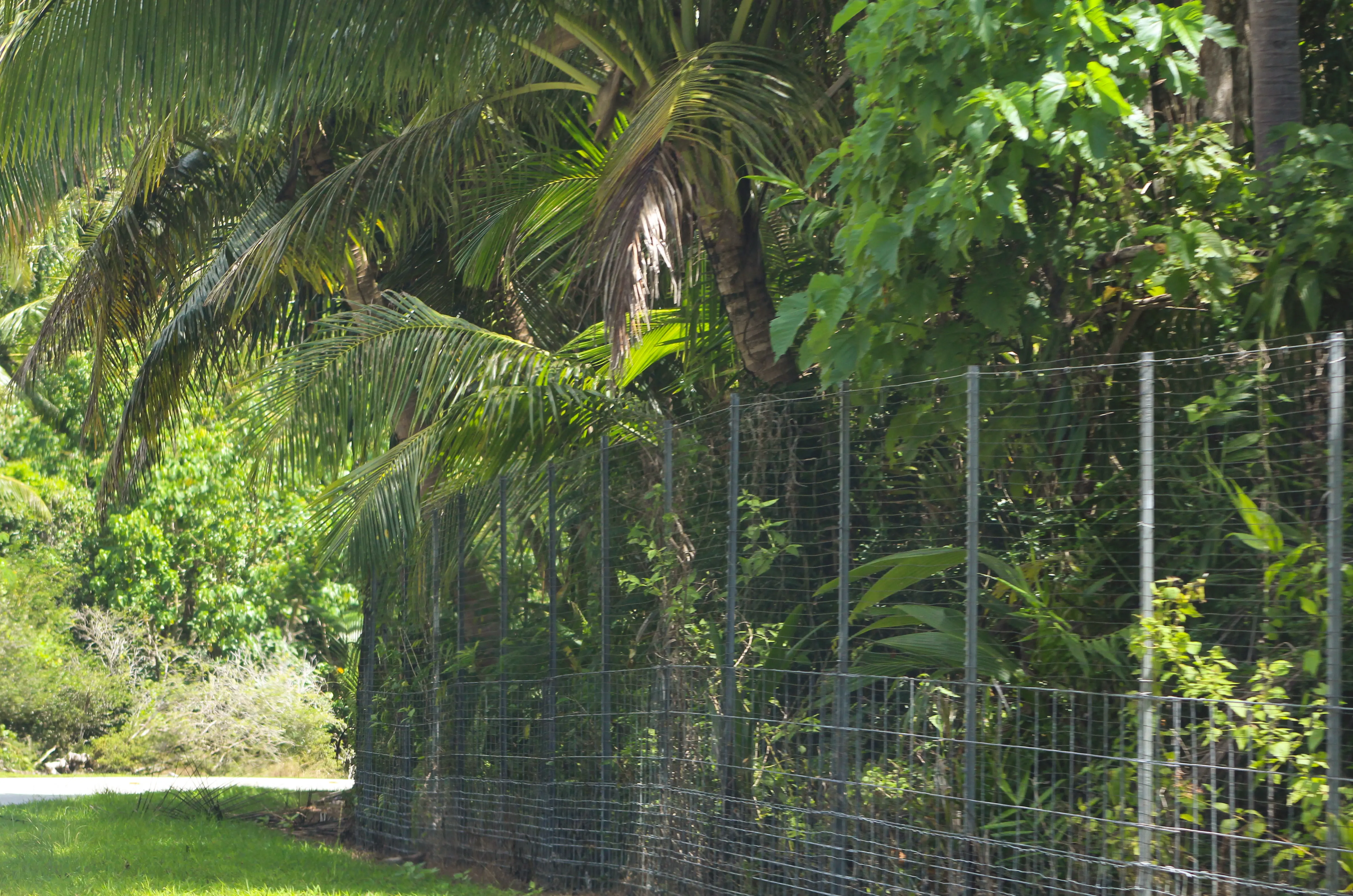
After parking at the bottom of the cliff, Monaeka and I walk across the cream-colored sands of Tarague. Monaeka recounts how their ancestors hid on ranches here during the World War II Japanese invasion, and then survived off the land during the violent U.S. recapture of the island. “Some of the last strongholds of CHamoru resistance are up in this area.” We stop for a moment as Monaeka points to an eroded spot on the distant cliffside. “That’s the site for open burn and detonation."
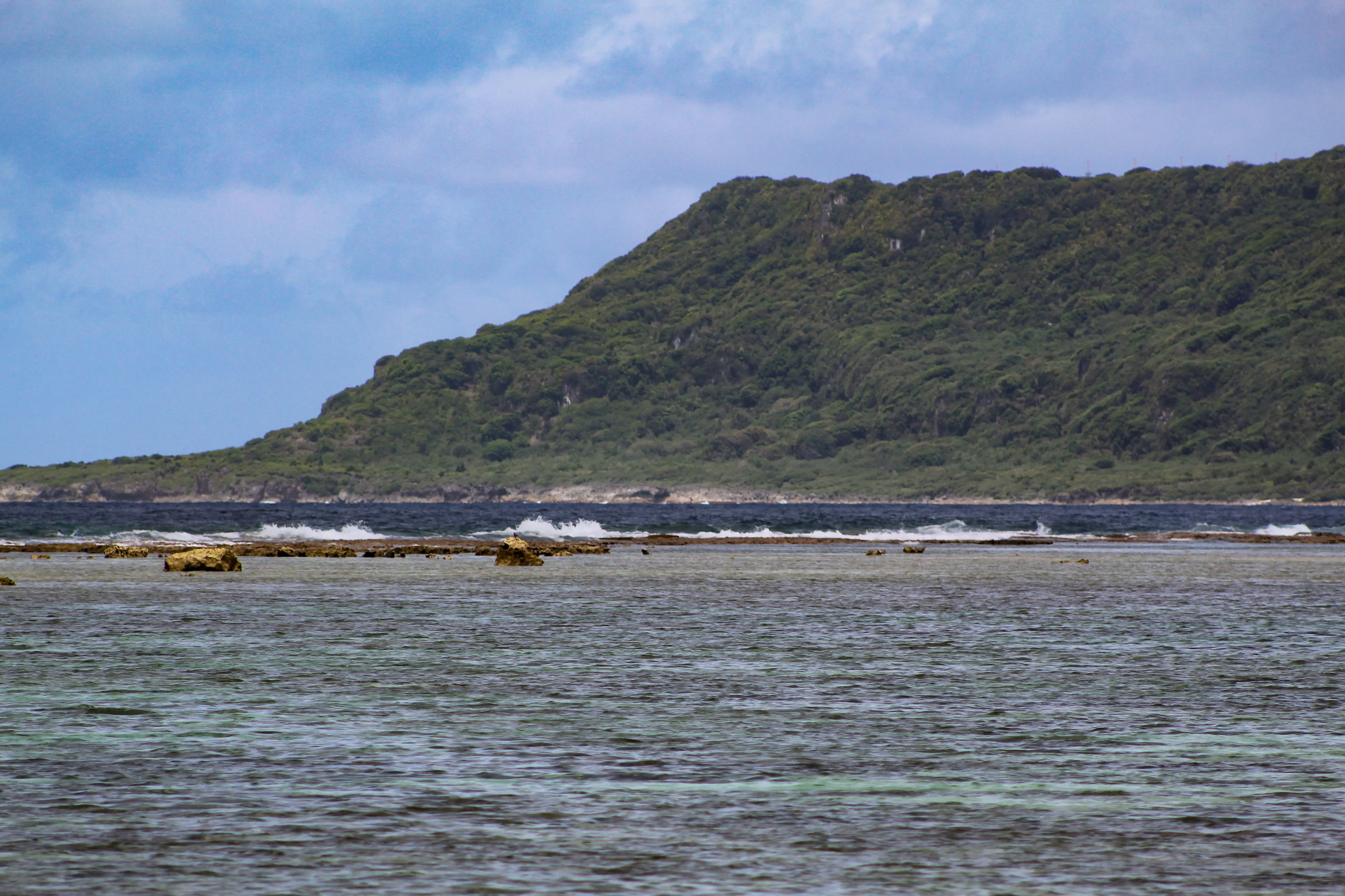
Open burn and open detonation (OB/OD) is one of the reasons I felt compelled to do my reporting project in Guam. In 2021, the U.S. Air Force filed to renew their permit to use OB/OD for 35,000 pounds of bombs and other munitions on Tarague Beach. OB/OD could release toxic chemicals into the surrounding air and the shallow aquifer underneath the site. But I soon learn the concerns around OB/OD go beyond potential impacts to air and water quality. “This is a sacred area,” Monaeka says, as they lead me away from Tarague Beach and onto a forested path towards their family’s land. It’s a place that harbors ancient architecture, traditional medicines, and serves as a safe haven for migratory birds, sea turtles, and other endangered species. During the 1-mile walk north towards their family’s ranch, Monaeka points to some pictographs high in the rock face. The faint etches are historical records of their ancient CHamoru ancestors who used this cave for cooking and shelter.
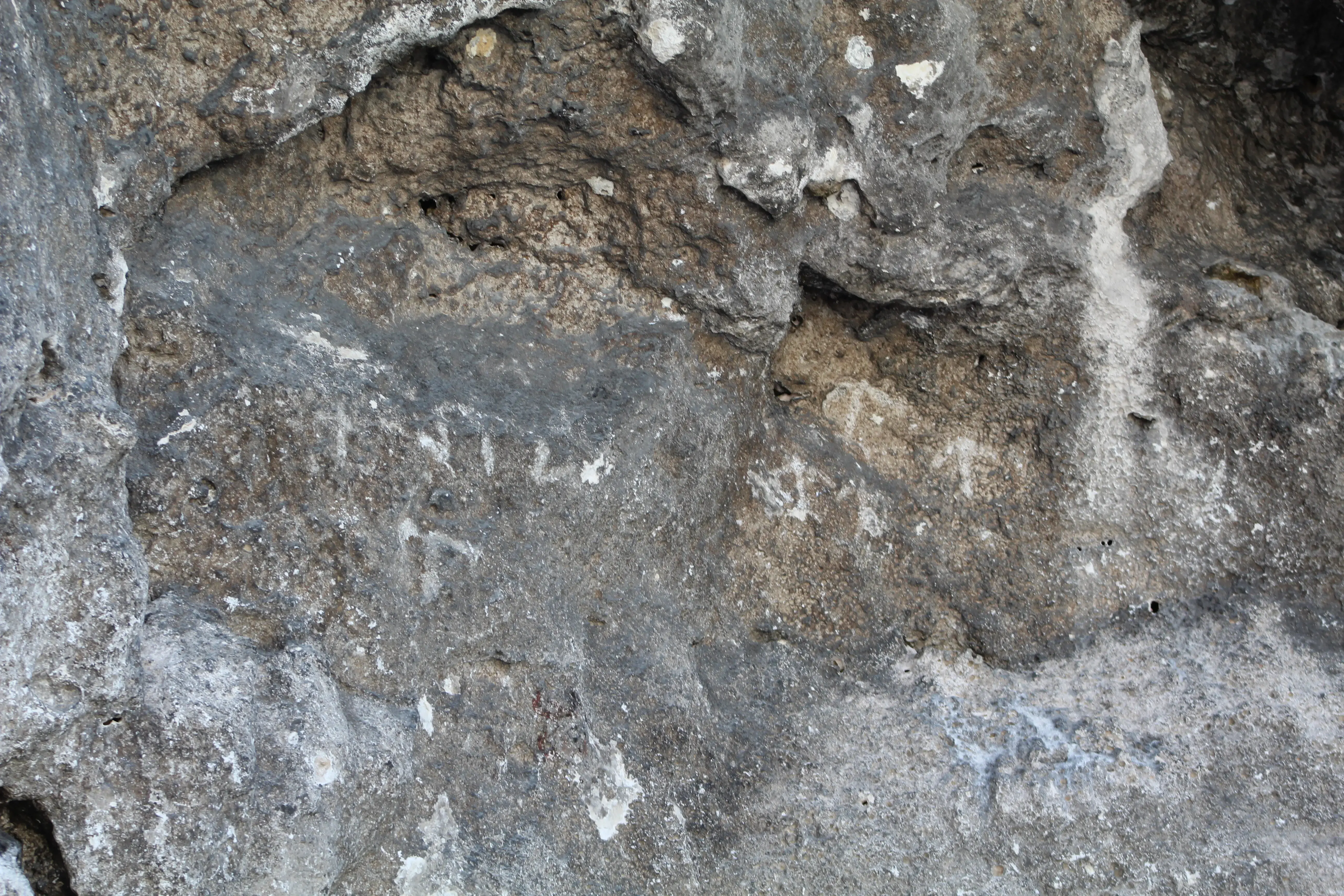
Monaeka’s knowledge of this land also extends to the local flora and fauna, which hold medicinal properties. They rub a fern that could be steamed for decongestion, squeeze the buds of a flower that can heal conjunctivitis, and point to a fruit called noni that is rich in antioxidants. “The [noni] leaf is also a spiritual amulet. If we’re going to a spiritually strong place, people believe you can tuck it into your waist or hold it, and you’re protected.”
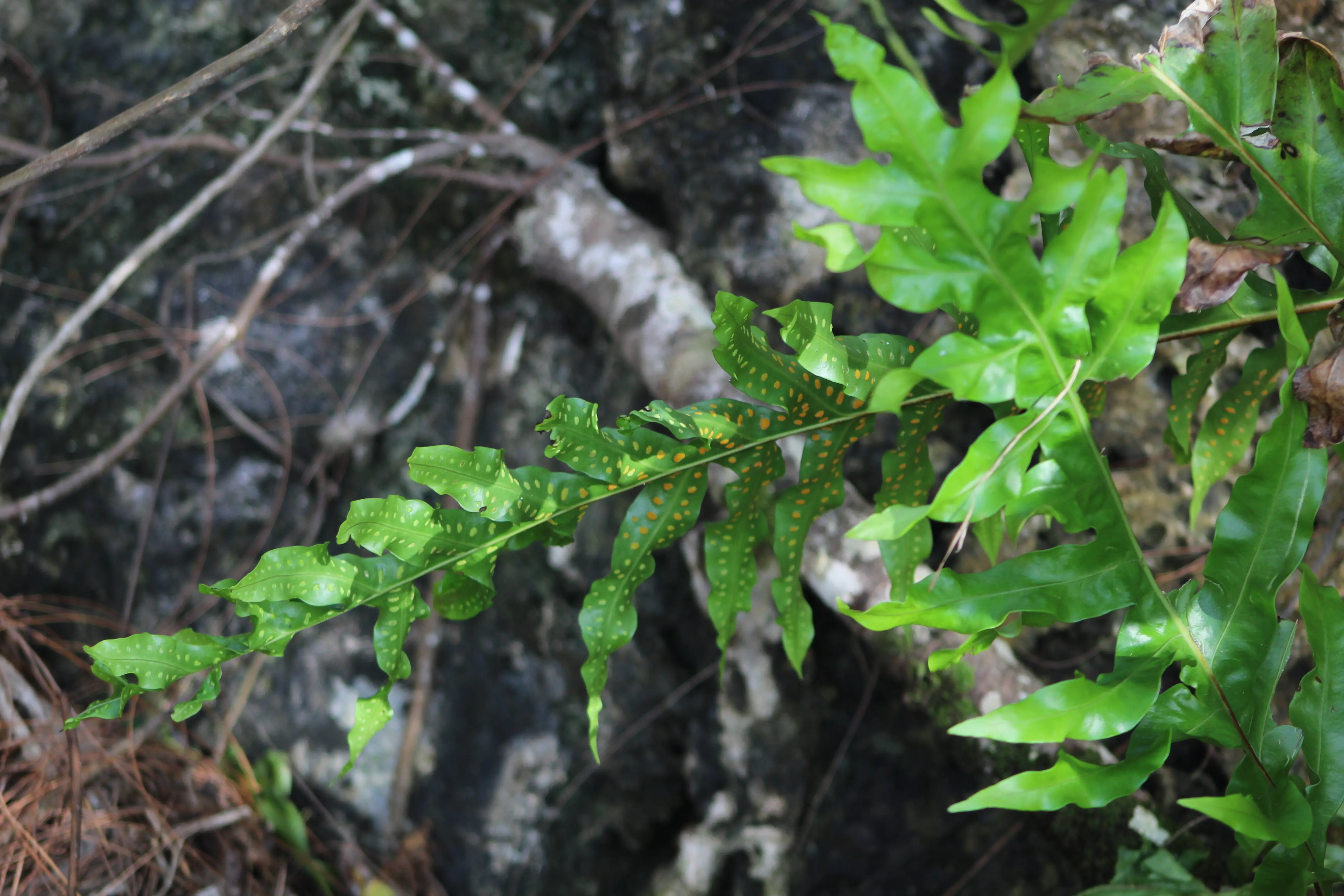
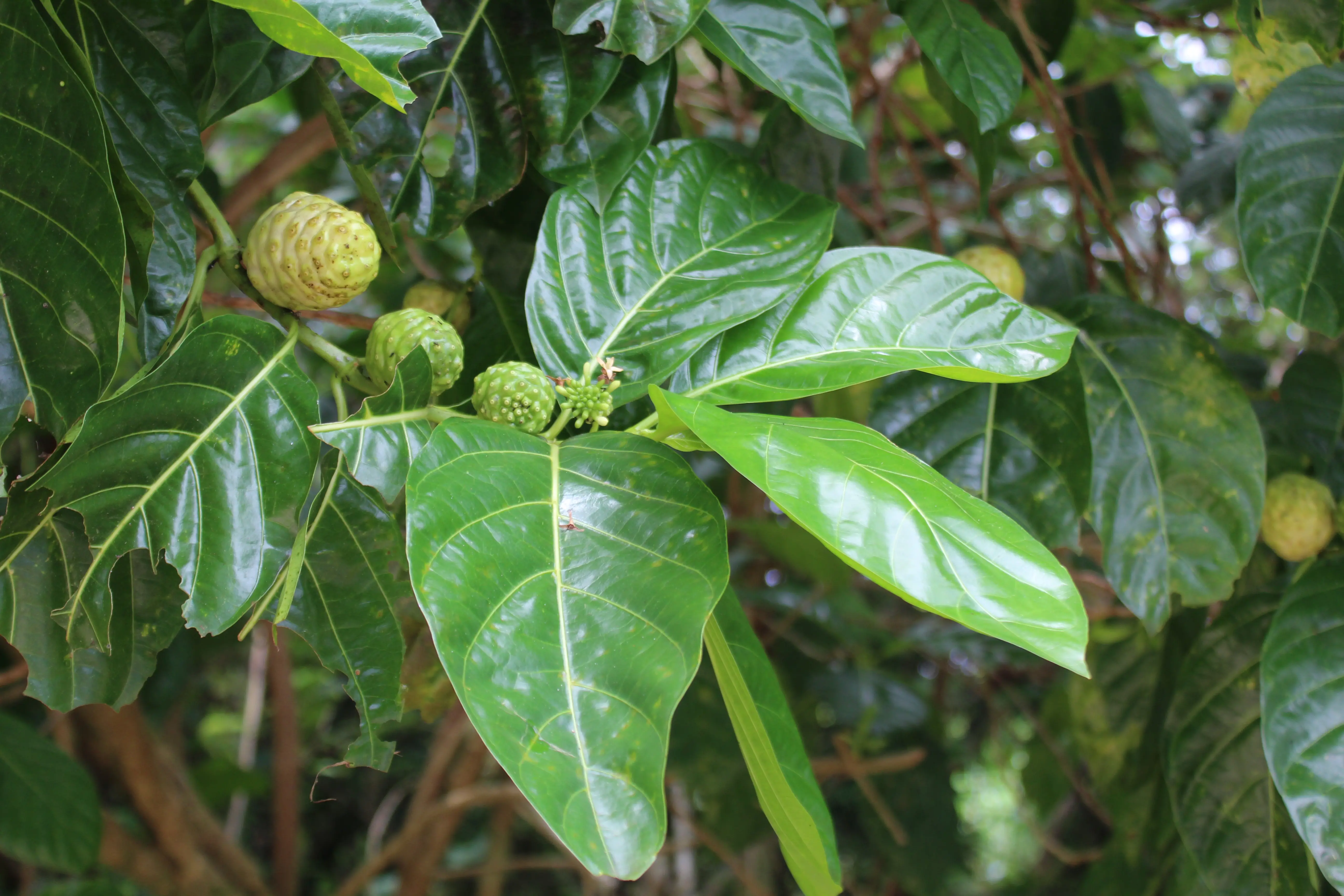
We soon approach a break from the jungle and pause. “This is one of my favorite views,” says Monaeka, as they gaze out across Inapsan. Their family’s ranch lies a bit farther in, which they say we could reach by walking along the beach or through the jungle.
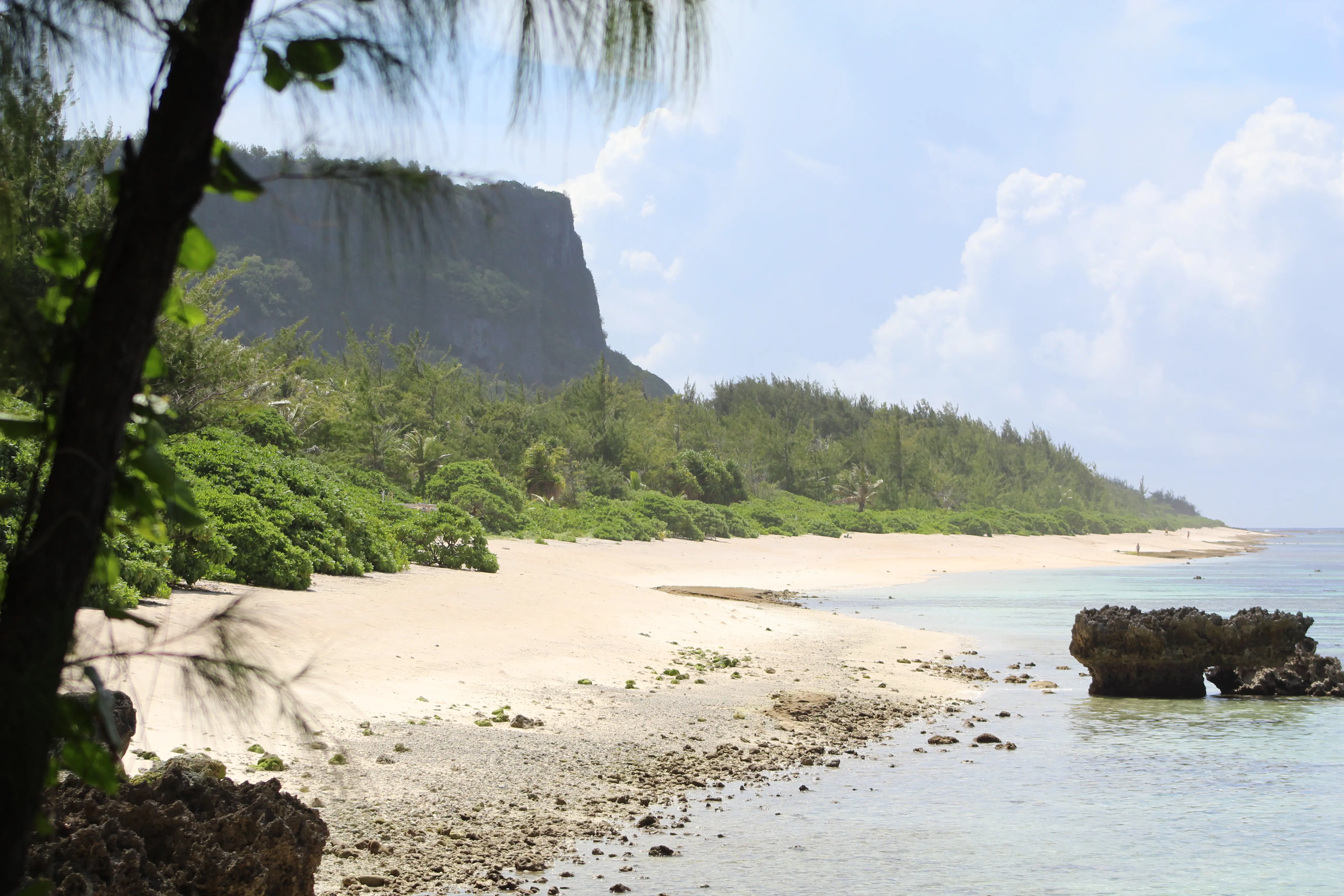
We decide to turn around, our bodies exhausted after a full afternoon in the sun. On the walk out, I gaze in wonder as butterflies create invisible constellations against a forest painted with draping vines.
It saddens me to think these lands and waters are not only locked away, but are at risk of being spoiled even further. “It’s a shame. My Grandfather would get really angry […] our own people can’t even come down here. It’s cut off—our traditional ways of living, food cultivation, language, and genealogy to these parts of the island that people have had ties to. It’s quite devastating.”
Monaeka says the daily realities of colonialism can create a sense of powerlessness. But by being in community, they manage to find the motivation to keep fighting. “We are here by the strength and love of our ancestors,” Monaeka tells me. “And we are the rightful stewards of our lands, waters, lifeways and culture we inherited from them.”












